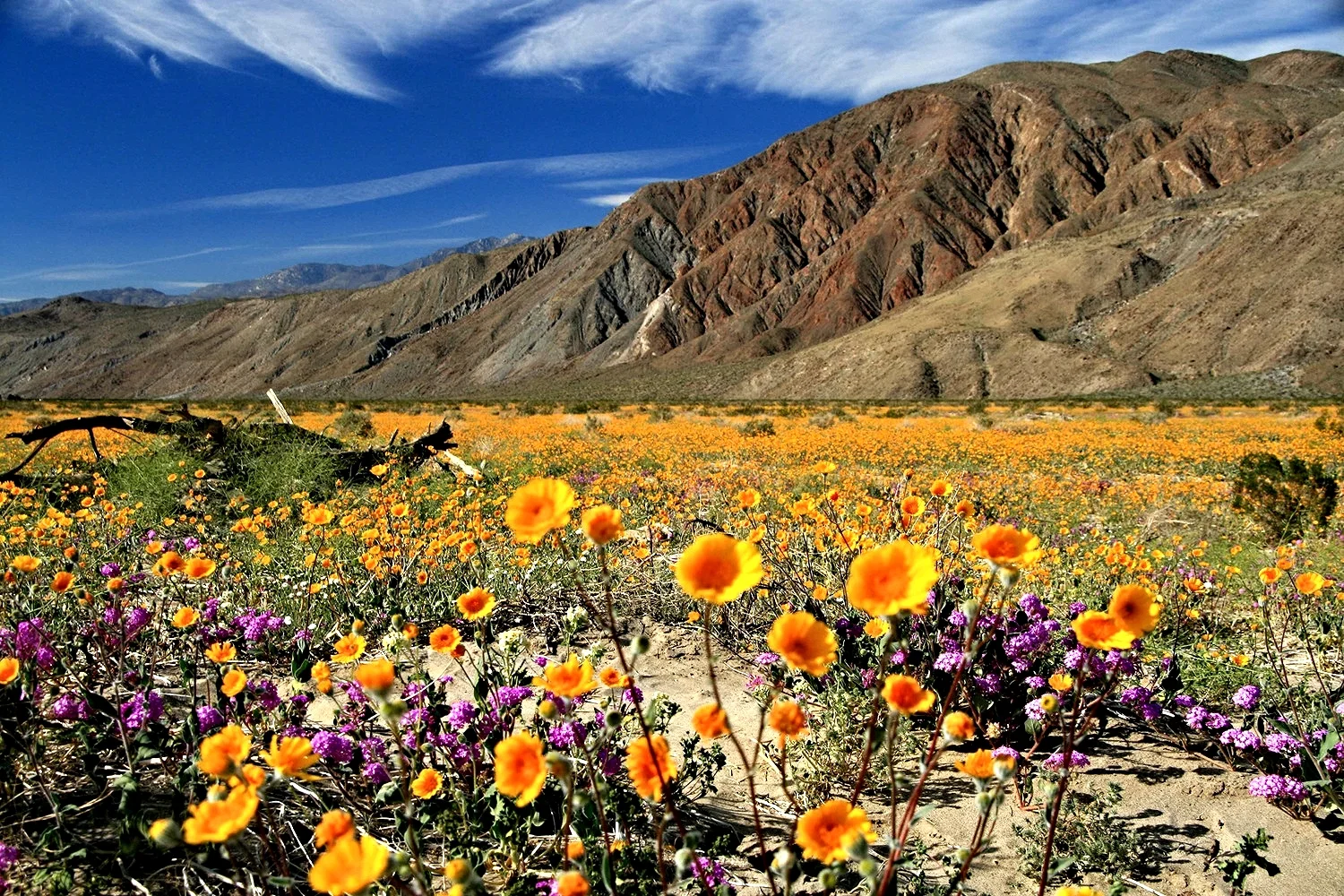By Joanne Ingwall, Past President
Major goals of the ABDSP Botany Society are “to promote greater education of volunteers and...to interpret Anza-Borrego’s unique plant resources to the public.” To accomplish these goals, Botany Society volunteers must learn plant morphology, plant ecology and the characteristics of the plant families comprising the diverse plant communities that exist in our Park. Its members and instructors have taken this task seriously.
How Botany Society volunteers learn
As for all of our Park societies, there is a Botany Certification Course held almost every season (missing only once in 10 years). The initial course was taught by CDD botanist Kim Marsden, followed by field expert Larry Hendrickson and then by educator Judy Ramirez. After Judy retired four years ago, the course has been taught by Botany Society volunteers. New and not-so new volunteers enroll in a 12-week long course held day-long every Monday, January through March. The goal is to learn enough plant morphology and ecology to be able to study the characteristics of twelve common plant families found in our desert. For plant morphology, San Diego State University Professor Mike Simpson’s excellent book Plant Systematics, Chapter 9 has been used. For the characteristics of the plant families, Sia and Emil Morhardt’s California Desert Flowers is used. The Morhardt book teaches each plant family using dichotomous keys (you know how that works: if this characteristic is present, go below to the next choice, if not, go to...etc.). Each chapter also has a useful section on similar families (or how not to get confused). The course is not all book learning and lectures. Almost every class has a field component and on occasion, the entire day is spent in the field—the theme of the course is “what do you see? What else do you see?” This year’s class is especially fortunate – as we actually have wild flowers blooming, making “seeing” easy and rewarding.
Botany Society volunteers continue to learn
Just as we expect our medical care providers to continue to learn and keep up to date, so too our volunteers must keep up to date with new plant discoveries and new information about plants learned, for example, from DNA analyses. We also need refresher lessons, and we want to learn about plants and plant families not covered in the Certification Course. To continue to learn, we formed the Botany Study Group six years ago. On Monday mornings in November, December and April (book ends of the January-March Certification Course), certified botany volunteers meet to select topics for study and then present the materials. To learn more about botany, we have taken advantage of online courses. We also use text books, monographs and all available resources to learn the new thinking about “what plants know,” to study specific plants and plant families not covered in the course, to study some plants and plant families in greater depth and to learn about paleobotany and ethnobotany. We have also learned about the early explorers of our region (and elsewhere) and the botanical discoveries that they made. We study certain plants in the field. Finally, we have guest lecturers on topics such as pollination and how palm trees are fertilized. Botany Study Group is fun!
Botany Society volunteers work to interpret Anza-Borrego’s unique plant resources to the public
Over the past 10 years, Botany Society volunteers have devoted many hundreds of hours to this important task. Here are just a few of the ways we have done this.
For many years, Botany Society volunteers Mary Ekelund and Paul Larson have led Thursday Visitor Center field training trips all over the Park. Botany is a major part of this training.
Other Visitor Center volunteers who are also Botany Society volunteers, including Kathy Bussey, Arie Korporaal, Laura Webb, Terry Hunefeld and others, are able to discuss “where are the flowers?” with Park visitors, with a background in our botanical richness.
Botany Society has partnered with the Anza-Borrego Foundation to lead flower walks for up to 30 visitors each trip for many years. Among the many volunteers who have devoted countless hours to this are Mike Bigelow, Paul Larson, Karin Vickers, the late Mac McNair, Kate Harper and Don Rideout, to name just a few.
Many of our volunteers also assist other groups leading flower trips in our desert, including the San Diego Natural History Museum (the NAT).
Finally, all the Botany Society volunteers educate our friends and relatives who visit us throughout the year about the rich botanical treasures in our Park.
Happy 10th Anniversary, with wishes for many more years of botanizing!










